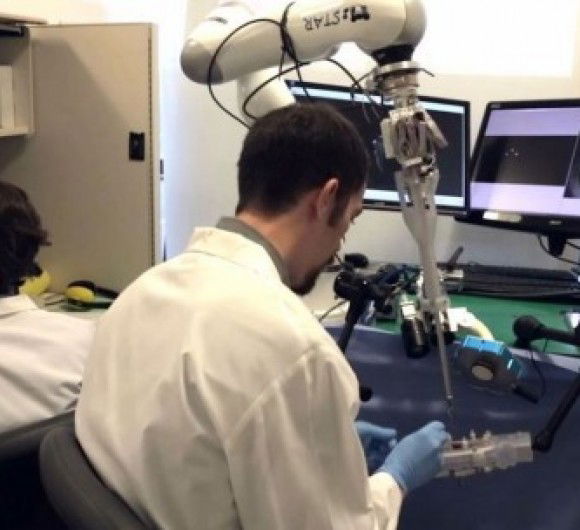Health
New robotic arm can make laparoscopic surgery cheaper

New York, Feb 22: Researchers, including one of Indian-origin, have developed a robotic arm that can drastically cut down the cost of performing complex, minimally invasive procedures, also known as laparoscopic surgery.
Minimally invasive procedures could lead to less trauma for patients and shorter recovery times after surgery.
The hand-held instrument developed at the University of Michigan in the US provides the same sorts of benefits as robot-assisted surgery, such as greater precision and functionality, but at a lower cost compared to existing robotic surgical systems, the creators said.
The new $500 surgical instrument could take the place of a $2 million robot for certain minimally invasive procedures, according to a university statement on Tuesday.
The lower cost could result in new capabilities for rural hospitals and other medical centres that cannot afford more expensive systems.
The technology gives surgeons a higher degree of dexterity and intuitive control than traditional laparoscopic instruments, said Shorya Awtar, Associate Professor of Mechanical Engineering at University of Michigan in the US.
The technology is based on US National Science Foundation-funded engineering research and is being commercialised by FlexDex Surgical.
Awtar, an alumnus of Indian Institute of Technology - Kanpur, co-founded FlexDex with his University of Michigan colleague and surgery professor, James Geiger, and entrepreneur Greg Bowles.
Surgeons in Michigan began using the new instrument in January, according to the team.
"This is the culmination of 10 years of effort and to know that the device is performing exactly as we expected it would, impacting patients' lives in a positive way -- it is an amazing feeling," Geiger said.
FlexDex is an all-mechanical platform that mounts to the surgeon's arm. It uses a unique engineering approach to enable the tip of the instrument to mimic the direction of movement of the surgeon's hand.
"Wherever I move my hand, the tip of this instrument follows," Geiger said.
No other instrument currently on the market operates like this, according to the team.
Minimally invasive procedures could lead to less trauma for patients and shorter recovery times after surgery.
The hand-held instrument developed at the University of Michigan in the US provides the same sorts of benefits as robot-assisted surgery, such as greater precision and functionality, but at a lower cost compared to existing robotic surgical systems, the creators said.
The new $500 surgical instrument could take the place of a $2 million robot for certain minimally invasive procedures, according to a university statement on Tuesday.
The lower cost could result in new capabilities for rural hospitals and other medical centres that cannot afford more expensive systems.
The technology gives surgeons a higher degree of dexterity and intuitive control than traditional laparoscopic instruments, said Shorya Awtar, Associate Professor of Mechanical Engineering at University of Michigan in the US.
The technology is based on US National Science Foundation-funded engineering research and is being commercialised by FlexDex Surgical.
Awtar, an alumnus of Indian Institute of Technology - Kanpur, co-founded FlexDex with his University of Michigan colleague and surgery professor, James Geiger, and entrepreneur Greg Bowles.
Surgeons in Michigan began using the new instrument in January, according to the team.
"This is the culmination of 10 years of effort and to know that the device is performing exactly as we expected it would, impacting patients' lives in a positive way -- it is an amazing feeling," Geiger said.
FlexDex is an all-mechanical platform that mounts to the surgeon's arm. It uses a unique engineering approach to enable the tip of the instrument to mimic the direction of movement of the surgeon's hand.
"Wherever I move my hand, the tip of this instrument follows," Geiger said.
No other instrument currently on the market operates like this, according to the team.

